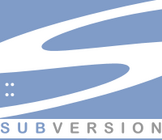AppFuse 2.0 M5 Released - now with CRUD generation and XFire support
![]() The AppFuse Team is pleased to announce the release of AppFuse 2.0 M5!
This release marks a milestone in the features of AppFuse 2.x. This release adds CRUD code generation, full source support (just like 1.x) and XFire integration. In addition, we've fixed all the issues related to switching persistence frameworks, and you should now be able to easily switch from using Hibernate to to iBATIS or JPA. The videos have been updated for M5. The Easy CRUD with Struts 2 video shows how code generation currently works.
The AppFuse Team is pleased to announce the release of AppFuse 2.0 M5!
This release marks a milestone in the features of AppFuse 2.x. This release adds CRUD code generation, full source support (just like 1.x) and XFire integration. In addition, we've fixed all the issues related to switching persistence frameworks, and you should now be able to easily switch from using Hibernate to to iBATIS or JPA. The videos have been updated for M5. The Easy CRUD with Struts 2 video shows how code generation currently works.
AppFuse 2.0 is available as a Maven archetype. For information on creating a new project using this release, please see the QuickStart Guide or the Hello World video.
If you've used AppFuse 1.x, but not 2.x, you'll want to read the FAQ and join the user mailing list if you have any questions. The Maven Reference Guide has a map of Ant » Maven commands. Maven for Newbies might also be useful if you've never used Maven before. There is some support for Ant in this release.
For more information, please see the 2.0 M5 Release Notes. If you'd like to use AppFuse offline (or download everything at once), you may want to grab the dependencies and extract them into your ~/.m2/repository directory.
The 2.0 series of AppFuse has a minumum requirement of the following specification versions:
- Java Servlet 2.4 and JavaServer Pages (JSP) 2.0
- Java 5 for Development (Java 1.4 for deployment using the Retrotranslator Plugin)
Comments and issues should be posted to the mailing list.
We appreciate the time and effort everyone has put toward contributing code and documentation, posting to the mailing lists, and logging issues. We also greatly appreciate the help from our sponsors, particularly Atlassian, Cenqua, Contegix, JetBrains, Java.net and KGBInternet. Without them, working on this project wouldn't be nearly as much fun.
Update: The videos are much lower quality than the ones I originally recorded (13 MB vs. 70 MB). If you want to view the high quality videos (they're much clearer), you can download them from java.net. If someone has a better way to compress these (I just used QuickTime's Export feature), please let me know.
Also, this release contains the first release of the AppFuse Maven Plugin. This plugin is largely based on Hibernate Tools. We modified many of the FreeMarker templates from Hibernate Tools to default to certain annotations, as well as clean up the formatting. These templates are currently available in AppFuse's SVN. Hopefully making them available is enough to satisfy Hibernate's LGPL license.







 I have a hectic travel schedule in both April and May. The good news is it consists of trips for both pleasure and business, so hopefully I won't get too tired of planes. Tomorrow, Julie and I are heading to good ol' Las Vegas. A good friend of mine got us a free room at the
I have a hectic travel schedule in both April and May. The good news is it consists of trips for both pleasure and business, so hopefully I won't get too tired of planes. Tomorrow, Julie and I are heading to good ol' Las Vegas. A good friend of mine got us a free room at the 